Freed Between The Lines
By Audrey Swartz, Adult Services and Readers’ Advisory Librarian
 The American Library Association (ALA) does many things for the profession from establishing guidelines for librarians across the board, to ethical requirements, to hosting a public policy and advocacy board, and tracking book challenges across the country through their Office for Intellectual Freedom (OIF). The OIF has been tracking book challenges and collecting data about challenged books since 1990, while the ALA established its now famous ‘Banned Books Week’ in 1982. In 2006, the organizations started to release the State of the Libraries Report. The report is published yearly and reflects the data collected for the previous year. According to the ALA State of America’s Libraries Report for 2024, they documented “4,240 unique book titles targeted for censorship in 2023—a 65% surge over 2022 numbers—as well as 1,247 demands to censor library books, materials, and resources…The number of titles targeted for censorship at public libraries increased by 92% over the previous year, accounting for about 46% of all book challenges in 2023.”
The American Library Association (ALA) does many things for the profession from establishing guidelines for librarians across the board, to ethical requirements, to hosting a public policy and advocacy board, and tracking book challenges across the country through their Office for Intellectual Freedom (OIF). The OIF has been tracking book challenges and collecting data about challenged books since 1990, while the ALA established its now famous ‘Banned Books Week’ in 1982. In 2006, the organizations started to release the State of the Libraries Report. The report is published yearly and reflects the data collected for the previous year. According to the ALA State of America’s Libraries Report for 2024, they documented “4,240 unique book titles targeted for censorship in 2023—a 65% surge over 2022 numbers—as well as 1,247 demands to censor library books, materials, and resources…The number of titles targeted for censorship at public libraries increased by 92% over the previous year, accounting for about 46% of all book challenges in 2023.”
You’ll often notice that we, libraries, interchange the use of challenged and banned, making things more complicated than this librarian feels necessary. We do not ban books. Book bans happen at the state, county, and city levels by those governing bodies. The rhetoric we use around challenged and banned books is intended to highlight what is happening, to shine a light on the things taking place in schools and public libraries across the country. When you visit Manhattan Public Library during September, you will notice that, while we do have a display up, we have decided to use the word ‘challenge’. Merriam-Webster defines challenge as “to confront, to call out, to question” while defining ban(ned) as “to prohibit or forbid.” Neither the public library nor the ALA is banning anything. As organizations we are highlighting what is being challenged.
Below you will find the rankings of the most challenged books for 2023. You may notice that all but one of these books are young adult focused, and I urge you to think about why that is. Another interesting fact is Toni Morrison’s “The Bluest Eye” has appeared on the list almost every year since the organization began collecting data and has constantly been in the top 35 most challenged books from 1990-2023, ranking 3rd in 2022.
- “Gender Queer: A Memoir” by Maia Kobabe
Maia Kobabe, who uses e/em/eir pronouns, thought that a comic of reading statistics would be the last autobiographical comic e would ever write. Started as a way to explain to eir family what it means to be nonbinary and asexual, Gender Queer is more than a personal story: it is a useful and touching guide on gender identity–what it means and how to think about it–for advocates, friends, and humans everywhere.
- “All Boys Aren’t Blue” by George M. Johnson
In a series of personal essays, prominent journalist and LGBTQIA+ activist George M. Johnson explores his childhood, adolescence, and college years in New Jersey and Virginia. From the memories of getting his teeth kicked out by bullies at age five, to flea marketing with his loving grandmother, to his first sexual relationships, this young-adult memoir weaves together the trials and triumphs faced by Black queer boys.
- “This Book Is Gay” by Juno Dawson
This book is for everyone, regardless of gender or sexual preference. This book is for anyone who’s ever dared to wonder. This book is for YOU. This candid, funny, and uncensored exploration of sexuality and what it’s like to grow up LGBTQ also includes real stories from people across the gender and sexual spectrums, not to mention hilarious illustrations.
- “The Perks of Being a Wallflower” by Stephen Chbosky
This is the story of what it’s like to grow up in high school. More intimate than a diary, Charlie’s letters are singular and unique, hilarious and devastating. We may not know where he lives. We may not know to whom he is writing. All we know is the world he shares.
- “Flamer” by Mike Curato
It’s the summer between middle school and high school, and Aiden Navarro is away at camp. Everyone’s going through changes–but for Aiden, the stakes feel higher. As he navigates friendships, deals with bullies, and spends time with Elias (a boy he can’t stop thinking about), he finds himself on a path of self-discovery and acceptance.
- “The Bluest Eye” by Toni Morrison
Pecola Breedlove, a young eleven-year-old black girl, prays every day for beauty. Mocked by other children for the dark skin, curly hair, and brown eyes that set her apart, she yearns for the blond hair and blue eyes that she believes will allow her to finally fit in. Yet as her dreams grow more fervent, her life slowly starts to disintegrate in the face of adversity and strife.
7/8. (tie) “Me and Earl and the Dying Girl” by Jesse Andrews
Seventeen-year-old Greg has managed to become part of every social group at his Pittsburgh high school without having any friends, but his life changes when his mother forces him to befriend Rachel, a girl he once knew in Hebrew school who has leukemia.
7/8. (tie) “Tricks” by Ellen Hopkins
Five teenagers from different parts of the country. Three girls. Two guys. Four straight. One gay. Some rich. Some poor. Some from great families. Some with no one at all. All living their lives as best they can, but all searching … for freedom, safety, community, family, love.
- “Let’s Talk About It: The Teen’s Guide to Sex, Relationships, and Being a Human” by Erika Moen and Matthew Nolan
Is what I’m feeling normal? Is what my body is doing normal? Am I normal? How do I know what are the right choices to make? How do I know how to behave? How do I fix it when I make a mistake? Let’s talk about it. Growing up is complicated.
- “Sold” by Patricia McCormick
Thirteen-year-old Lakshmi leaves her poor mountain home in Nepal thinking that she is to work in the city as a maid only to find that she has been sold into the sex slave trade in India and that there is no hope of escape.
To investigate more, please visit the ALA’s website at https://www.ala.org/bbooks or come on by and take a look at our display while snagging a library exclusive bookmark. As always, feel free to reach out to me as the Readers’ Advisory Librarian at aswartz@mhklibrary.org for a personalized reading list or suggested readings of any sort.
Manhattan Public Library is a cornerstone of free and equal access to a world of ideas and information for the Manhattan, Kansas, community. Manhattan Public Library serves more than 75,000 people in the Riley County area through curated book and other media collections, knowledgeable staff, relevant programming for all ages, and meeting space. Learn more at mhklibrary.org.
# # #
Audrey Swartz, Adult Services and Readers’ Advisory Librarian


 I love LEGO. Do you love LEGO? Your friendly neighborhood readers’ advisory librarian is a huge fan of this interlocking brick system. Honestly, feel free to come by my office at the library to see my collection. I have a whole garden of flowers and a small collection of books, even a pop-up book. At home my collection is slightly nerdier, including many Star Wars ships, The Big Bang Theory set, Disney Villains, and even a LEGO Atari. LEGO has always embraced the idea that they are for everyone, but it wasn’t until 2017 that they started marketing directly to adults; the first adult age range sets weren’t released until 2020.
I love LEGO. Do you love LEGO? Your friendly neighborhood readers’ advisory librarian is a huge fan of this interlocking brick system. Honestly, feel free to come by my office at the library to see my collection. I have a whole garden of flowers and a small collection of books, even a pop-up book. At home my collection is slightly nerdier, including many Star Wars ships, The Big Bang Theory set, Disney Villains, and even a LEGO Atari. LEGO has always embraced the idea that they are for everyone, but it wasn’t until 2017 that they started marketing directly to adults; the first adult age range sets weren’t released until 2020.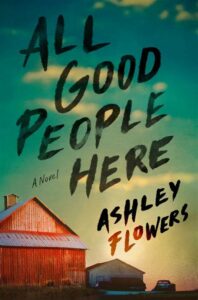 The pools are closed, kids are back in school, and the call of pumpkin patches and cozy socks has begun to tempt me into believing autumn is near. While the Kansas weather may disagree, I’ve begun daydreaming of sweater weather with chilly nights and brisk mornings. At times I even allow myself to imagine an evening walk without the threat of mosquitoes. But while my zinnias are still in full bloom and tomatoes continue to ripen on the vine, I’ll have to settle for the chill of mystery and thriller books – with the aid of central air – for a few more weeks.
The pools are closed, kids are back in school, and the call of pumpkin patches and cozy socks has begun to tempt me into believing autumn is near. While the Kansas weather may disagree, I’ve begun daydreaming of sweater weather with chilly nights and brisk mornings. At times I even allow myself to imagine an evening walk without the threat of mosquitoes. But while my zinnias are still in full bloom and tomatoes continue to ripen on the vine, I’ll have to settle for the chill of mystery and thriller books – with the aid of central air – for a few more weeks.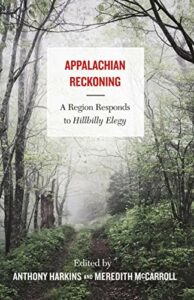
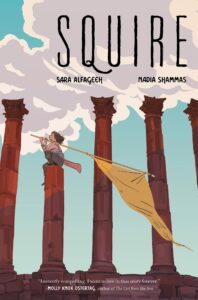 As an avid reader of Sci-Fi and Fantasy books, visualizing the world the author is creating is crucial. Being able to take the words from the page and build them into rich worlds that are interconnected and vital to the story is key, yet most people will visualize characters and settings differently than the next. This is a fun way to flex one’s creativity and the world is made better by those who take these thoughts and create and share fanart of their favorite books. However, when an author decides to write a graphic novel the illustrations are specifically chosen for the story, a point that cannot be overstated. The author, who doubles as the illustrator for some novels, can also remove any ambiguity about character design and the world by using this format. Graphic novels uniquely combine visual art with written narratives: illustrations, vibrant colors, and detailed artwork transport readers into captivating worlds. The storyline is equally crucial—amazing visuals must align with a compelling plot to create a successful graphic novel. Graphic novels delve into societal issues through visual interpretations. Works like Marjane Satrapi’s “
As an avid reader of Sci-Fi and Fantasy books, visualizing the world the author is creating is crucial. Being able to take the words from the page and build them into rich worlds that are interconnected and vital to the story is key, yet most people will visualize characters and settings differently than the next. This is a fun way to flex one’s creativity and the world is made better by those who take these thoughts and create and share fanart of their favorite books. However, when an author decides to write a graphic novel the illustrations are specifically chosen for the story, a point that cannot be overstated. The author, who doubles as the illustrator for some novels, can also remove any ambiguity about character design and the world by using this format. Graphic novels uniquely combine visual art with written narratives: illustrations, vibrant colors, and detailed artwork transport readers into captivating worlds. The storyline is equally crucial—amazing visuals must align with a compelling plot to create a successful graphic novel. Graphic novels delve into societal issues through visual interpretations. Works like Marjane Satrapi’s “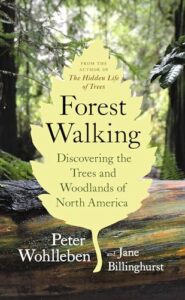 The heat of summer is upon us, and many of us will fill the few nice days with outdoor activities: hikes, trips to the zoo, the county fair, and, of course, the ever-calling draw of swimming. At Manhattan Public Library, we pride ourselves on our diverse program activities. You may have noticed a slew of new adult programs on our calendar thanks to our new Adult Programming Librarian, Victoria. Recently she took a group of 17 library patrons on a hike; it turned out to be a lovely day and a hit. I suspect we will see more outdoor adventures planned in the near future. If you missed the hike, we have created a handy-dandy list of books you can check out to explore the prairie on your own. All information for these titles has been taken from our catalog, which can be accessed at
The heat of summer is upon us, and many of us will fill the few nice days with outdoor activities: hikes, trips to the zoo, the county fair, and, of course, the ever-calling draw of swimming. At Manhattan Public Library, we pride ourselves on our diverse program activities. You may have noticed a slew of new adult programs on our calendar thanks to our new Adult Programming Librarian, Victoria. Recently she took a group of 17 library patrons on a hike; it turned out to be a lovely day and a hit. I suspect we will see more outdoor adventures planned in the near future. If you missed the hike, we have created a handy-dandy list of books you can check out to explore the prairie on your own. All information for these titles has been taken from our catalog, which can be accessed at 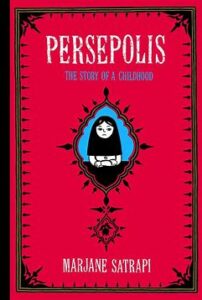
 here are a few things I’m truly proud of, and one of them is being the eldest sister of my three brothers. Growing up, there was never a dull moment in our household. From the summer days spent swimming to inventing new tricks on the trampoline, our childhood was full of fun and excitement (despite the occasional sibling squabble). Life got even more exciting when our third brother was born. Despite my not-so-secret desire for a little sister, I was instantly smitten with my new sibling. Then our lives changed in a different way. After he was born, my brother was diagnosed with Down syndrome. When my parents sat me down to explain this news, I was confused and not sure what to think. Would my brother be okay? How/why did this happen? Would other kids—or even adults—be nice to him? Answers to these questions were hard to find. However, after some time, I found them in one of my favorite places: books.
here are a few things I’m truly proud of, and one of them is being the eldest sister of my three brothers. Growing up, there was never a dull moment in our household. From the summer days spent swimming to inventing new tricks on the trampoline, our childhood was full of fun and excitement (despite the occasional sibling squabble). Life got even more exciting when our third brother was born. Despite my not-so-secret desire for a little sister, I was instantly smitten with my new sibling. Then our lives changed in a different way. After he was born, my brother was diagnosed with Down syndrome. When my parents sat me down to explain this news, I was confused and not sure what to think. Would my brother be okay? How/why did this happen? Would other kids—or even adults—be nice to him? Answers to these questions were hard to find. However, after some time, I found them in one of my favorite places: books. Wildly varying temperatures and time off school lead to plenty of reading time. These signal that the Kansas summer is upon us. Summer reading has officially started at Manhattan Public Library (the first official day of summer is only weeks away), and our June celebrations around town have begun. This year’s Juneteenth celebration takes place on Saturday, June 15th at Douglass Park. The Unity Walk and vendor booths open at 10:30 am with entertainment going through 8pm. Come visit us at the Manhattan Public Library booth from 11 am to 2 pm. We will have plenty of swag and smiling faces!
Wildly varying temperatures and time off school lead to plenty of reading time. These signal that the Kansas summer is upon us. Summer reading has officially started at Manhattan Public Library (the first official day of summer is only weeks away), and our June celebrations around town have begun. This year’s Juneteenth celebration takes place on Saturday, June 15th at Douglass Park. The Unity Walk and vendor booths open at 10:30 am with entertainment going through 8pm. Come visit us at the Manhattan Public Library booth from 11 am to 2 pm. We will have plenty of swag and smiling faces!